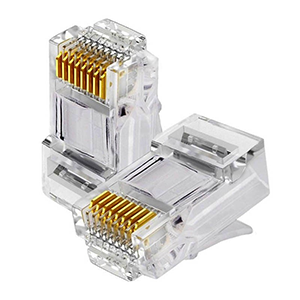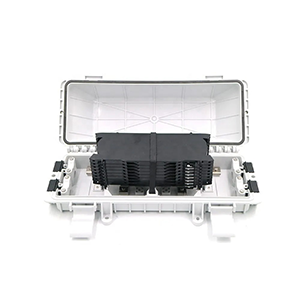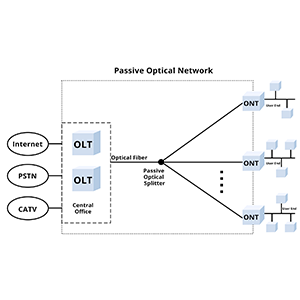Fiber patch cords play an important role in optical communications. This article will focus on APC (angled physical contact) fiber patch cords. We will first explain the basic structure and function of fiber patch cords and explain their applications in optical networks. Next, we will define the basic characteristics of APC fiber patch cords and explain their working principles and main advantages.
Then, we will focus on comparing the differences between APC fiber patch cords and PC (physical contact) fiber patch cords and UPC (ultra physical contact) fiber patch cords, and explain the applicability of different types of fiber patch cords in practical applications. Finally, we will introduce the typical deployment scenarios of APC fiber patch cords in optical networks such as DWDM and FTTH, and analyze its advantages in various application scenarios.
Overview of fiber patch cords
Fiber patch cords are short optical fiber connectors in optical fiber communication systems, used to connect optical fiber devices and devices, and between optical fibers. It is usually equipped with connectors to provide stable optical signal transmission and is widely used in data centers, communication networks, and test systems.
Basic structure and function of fiber jumper:
Fiber jumper is a fiber connection cable used to connect optical network equipment. Its basic structure includes:
- Fiber core: responsible for the transmission of optical signals, can be single-mode or multi-mode optical fiber.
- Protective layer: including buffer layer, sheath layer, etc., providing mechanical and environmental protection.
- Fiber connector: such as SC, LC, FC, etc., used for detachable connection with device ports.
The main function of fiber jumper is:
- To interconnect optical network equipment such as switches and routers.
- To establish a reliable optical transmission path between devices to achieve end-to-end optical transmission.
- To ensure the transmission quality and reliability of optical signals during the connection process.
Through the flexible connection of fiber jumpers, a complete optical network topology can be formed.
Application of fiber jumpers in optical networks:
Fiber jumpers are widely used in various optical networks, mainly including the following scenarios:
(1) Optical access network:
- Connect optical line terminal (OLT) and user terminal equipment (ONT).
- Realize the last mile fiber connection in FTTH network.
(2) Optical trunk network:
- Connect optical transmission equipment such as ROADM, OXC, etc.
- Establish optical connection in long-distance trunk transmission network.
(3) Data Center Interconnection:
- Connects optical network devices inside the data center.
- Supports optical connections between devices in high-speed optical interconnection networks.
(4) Optical Distribution Frame:
- Connects various optical network devices inside the distribution frame.
- Provides flexible optical fiber connection and management functions.
(5) Laboratory and Test Environment:
- Used to build an optical communication experimental platform.
- Supports the testing and evaluation of optical devices and systems.
In short, as the basic connection element in the optical network, the optical fiber jumper plays a key role in various optical network application scenarios, ensuring the connection of the end-to-end optical transmission path and the quality of the optical signal.
Definition of APC Fiber Patch Cable
APC Fiber Patch Cable is a fiber patch cable with an angled end face design to reduce signal reflection and insertion loss. It provides high-quality optical signal transmission and is widely used in fiber optic communications and data center applications that require low return loss.
Basic features of APC Fiber Patch Cable:
APC (Angled Physical Contact) fiber patch cable is a fiber optic connection cable with a special fiber end face structure. Its main features include:
(1) Angled interface on the fiber end face:
- The end face of the fiber core is processed into an angle of 8° to 15°.
- This angled end face is the core feature of the APC patch cable.
(2) Special fiber connector structure:
- APC patch cables use matching angled fiber connectors.
- The internal structure of the connector is different from that of ordinary connectors to adapt to the angled end face.
Working principle of APC fiber jumper:
APC jumper uses the characteristics of the angled end face to achieve the following functions:
(1) Reflection suppression:
- The angled end face can effectively suppress the reflection of the optical signal at the connection interface.
- The reflected light power can be reduced to below -60dB, which is much lower than that of ordinary connectors.
(2) Achieve high isolation:
- Reflection suppression is conducive to improving the isolation between the devices at both ends of the jumper.
- High isolation can prevent reflected light from interfering with communication signals.
This APC fiber patch cord based on the angled end face design can effectively solve the problem of optical signal reflection and interference.
Main advantages of APC fiber patch cord:
(1) Low reflection loss:
- APC patch cord can reduce reflection loss to an extremely low level, better than -60dB.
- It is conducive to ensuring the quality and stability of optical signal transmission.
(2) High isolation:
- APC patch cord can achieve an isolation of up to 60dB at the physical layer.
- Ensure the independence of different optical channels to avoid mutual interference.
(3) Suppress optical interference:
- The low reflection characteristic can effectively suppress the system performance degradation caused by optical interference.
- Improve the overall reliability and stability of the optical network.
In summary, APC fiber jumpers have obvious advantages in low reflection, high isolation and suppression of optical interference due to their special angled end face design, and are widely used in various high-performance optical networks.
Comparison between APC fiber jumpers and other types
Compared with other types of fiber jumpers, APC fiber jumpers have lower return loss and smaller signal reflection. Compared with UPC (Ultra Physical Contact) jumpers, APC’s end face bevel design effectively reduces signal loss and is suitable for high-precision communication and data center applications.
Differences between APC and PC fiber jumpers:
(1) End face shape:
- The APC fiber end face adopts an angle of 8°-15°.
- The PC fiber end face is flat.
(2) Reflection characteristics:
- APC has extremely low reflection loss, usually less than -60dB.
- PC has higher reflection loss, usually around -30dB.
(3) Application scenarios:
- APC is more suitable for high-performance optical networks that require low reflection and high isolation.
- PC is more suitable for ordinary optical network applications with lower reflection requirements.
Differences between APC and UPC fiber jumpers:
(1) End face tilt angle:
- APC end face tilt angle is 8°-15°.
- UPC end face tilt angle is 2°-5°.
(2) Reflection performance:
- APC has extremely low reflection loss, usually less than -60dB.
- UPC also has low reflection loss, usually around -45dB.
(3) Isolation:
- APC can achieve isolation of up to 60dB.
- UPC has relatively low isolation, usually around 40dB.
Applicability of different fiber jumpers:
(1) PC jumper:
- Applicable to ordinary optical network applications with relatively low reflection requirements.
- Low cost and wide application.
(2) UPC patch cord:
- Applicable to optical network applications with certain requirements for reflection and isolation.
- Performance is between PC and APC, and the cost is medium.
(3) APC patch cord:
- Applicable to high-performance optical network applications with strict requirements for reflection and isolation.
- High reliability, but relatively high cost.
In short, different types of fiber patch cords have their own applicable scenarios, and they need to be selected according to the specific optical network application requirements. With its excellent reflection and isolation performance, APC patch cords are more suitable for high-speed optical networks and application scenarios with strict requirements on signal quality.
Typical Application Scenarios of APC Fiber Patch Cords
APC fiber patch cords are widely used in scenarios that require low return loss and high signal integrity, such as fiber-optic communication systems, data centers, and high-frequency networks. They are suitable for use in fiber optic connectors to ensure high-quality signal transmission and stable network performance.
- DWDM optical network:
- APC patch cords are used for optical port connections in DWDM systems.
- Crosstalk and signal distortion caused by reflected light can be effectively suppressed.
- High isolation helps to ensure the independence of DWDM multi-wavelength signals.
- Excellent reflection characteristics are conducive to improving the overall performance of DWDM systems.
- Fiber-to-the-Home (FTTH) Network:
- APC patch cords are used in the optical distribution segment of PON networks.
- Connect OLT and ONT equipment to ensure the transmission quality of the last mile.
- Low reflection characteristics help improve the electro-optical conversion efficiency of PON systems.
- High isolation ensures isolation between user signals to avoid interference.
- Data center optical interconnection network:
- APC jumpers are used for high-speed optical connections of internal equipment in data centers.
- Reliable optical transmission channels are conducive to supporting the high performance of data center networks.
- Low power consumption characteristics help reduce the overall energy consumption of data centers.
- Modular design is conducive to the flexible expansion of data center networks.
- Passive optical network test environment:
- APC jumpers are widely used in optical communication laboratories and test platforms.
- Excellent reflection suppression performance helps improve measurement accuracy.
- High isolation ensures independence between different test channels.
- It is conducive to the reliability and repeatability of optical device and system test results.
The main advantages of APC fiber jumpers in the above application scenarios are:
- Low reflection loss: extremely low reflection characteristics ensure the quality of optical signal transmission.
- High isolation: strong isolation performance ensures signal independence and avoids interference.
- Reliability: Based on the design of the angled end face, it has excellent long-term stability.
- Wide applicability: It can be widely used in various high-performance optical networks and test environments.
Therefore, APC fiber jumpers have become an indispensable key connection element in high-speed and high-performance optical networks.
Summary
APC fiber optic patch cord is a key component for building high-performance optical networks. Our company has long focused on the research and development and application of fiber optic patch cords and has rich practical experience. We provide various high-performance APC fiber optic patch cord products, which are widely used in DWDM, FTTH, data centers and other fields. Our APC fiber optic patch cord adopts the industry-leading manufacturing process and achieves excellent levels in key performance indicators such as reflection loss and isolation.
At the same time, our team of engineers will provide you with professional demand analysis and solution design services to ensure that the selected APC fiber optic patch cord can meet your actual needs to the greatest extent. Contact us now to learn more. We will do our best to provide you with the best products and solutions.
APC Fiber Patch Cord FAQ
An APC (Angled Physical Contact) patch cord is a type of optical fiber patch cable with connectors that feature an angled end-face. This design reduces signal reflection and loss in fiber optic networks.
The main difference is in the connector end-face. APC connectors have an 8-degree angle that minimizes signal reflection, whereas UPC (Ultra Physical Contact) connectors have a flat end-face. APC connectors generally offer lower return loss and better performance for high-precision applications.
Return loss is the measure of signal reflection caused by a connector or splice. APC patch cords provide high return loss, meaning they reflect less light back into the fiber, which improves signal quality and reduces interference.
APC patch cords are commonly used in high-performance fiber optic networks, including telecommunications, data centers, and broadcast applications where low signal loss and minimal reflection are critical.
APC patch cords are designed for single-mode fiber applications. They are less commonly used with multi-mode fibers due to the different performance requirements.
The insertion loss for APC patch cords is generally very low, typically around 0.2 dB to 0.5 dB, depending on the quality of the connector and the fiber.
To ensure optimal performance, APC patch cords should be handled with care to avoid bending or damaging the fibers. Regularly inspect the connectors for dirt or damage and clean them if necessary using appropriate fiber optic cleaning tools.
Yes, APC patch cords can be used in outdoor environments if they are rated for such use. Ensure that the patch cords have appropriate weather-resistant jackets and are designed to withstand environmental conditions.
Select an APC patch cord based on factors such as fiber type (single-mode), connector type (LC, SC, ST, etc.), length, and application requirements. Ensure compatibility with existing equipment and network specifications.
The advantages include reduced signal reflection and higher return loss, which results in improved signal integrity and performance. This is particularly beneficial in high-speed and high-precision optical networks.




